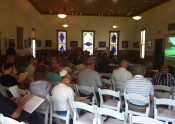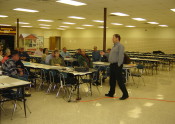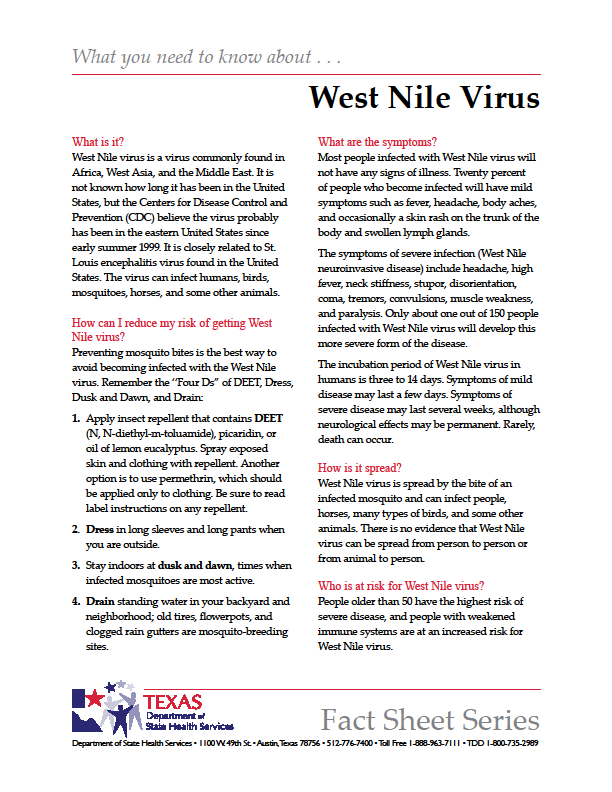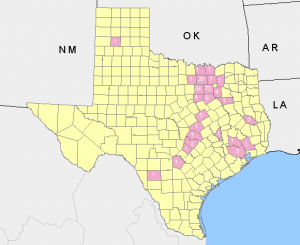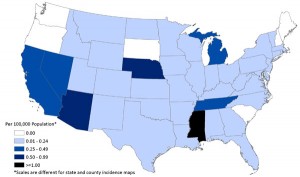Expert: Drought is only part of the story

Writer: Robert Burns,903-834-6191, rd-burns@tamu.edu
OVERTON – Although drought is often the cause, trees can die for other reasons besides lack of soil moisture, said Dr. Eric Taylor, Texas AgriLife Extension Service forestry specialist, Overton.
“Drought is the primary contributor to tree kill, but it may not be exactly the way you might be thinking,” Taylor said. “You may find this hard to believe, but relatively few trees likely died directly from dehydration in 2011. Instead, the 2011 drought severely weakened mature trees, making them susceptible to opportunistic pathogens like hypoxylon canker and insects like pine bark engraver beetles.”
He said that in most instances, the trees that died in 2011 were already stressed from a number of pre-existing environmental factors such as overcrowding, growing on the wrong site, age, soil compaction, trenching or inappropriate use of herbicides. If not for these factors, a large proportion of the trees that died might have recovered from the drought.
“This is an important concept to remember because our best defense against drought is to promote a tree’s health and vigor through proper care and management,” Taylor said.
This is not to play down the importance of water to tree health, he said. Water, particularly soil moisture, is critical for all a tree’s physiological processes. Trees require water to make and transport food, take in and release carbon dioxide, conduct biochemical reactions, build tissue and more.
“You name it, the tree needs water to do it,” Taylor said.
Though moisture stress may be the trigger,many trees likely died from insect damage, invasion of fungi and other diseases, and even heat stroke, according to Taylor.
“Much of the recent tree deaths and general decline might also be attributed to the extreme and prolonged heat of 2011,” he said. “Extreme temperatures, not only during the day but also in the early evenings and night, have negative impacts to tree physiological processes.”
Taylor said although it is the lack of water that’s at the root of tree death by heat stroke, there’s more to it than the tree being thirsty. As do humans, trees sweat to cool themselves off. Only with trees, the process is called “transpiration,” and it’s water evaporating primarily from leaves that dissipates heat.
Inadequate soil moisture coupled with hot air temperatures means a tree’s ability to transpire is limited.
“As a result, the cells in leaves and small branches can ‘cook’ to death,” Taylor said.
This “cooking” results in cell and protein breakdown, the generation and/or buildup of toxins, lesions and eventually death of the tree, he said.
As for tree deaths from macro fungi on hardwoods such as hypoxylon canker, it’s stress brought on by drought and heat that creates opportunity for the disease, not the direct effects of moisture shortage, Taylor said. Hypoxylon is a white-rot fungus that is usually considered a weak pathogen — not aggressive enough to take over healthy trees.
“It is only of consequence when the trees are under severe stress and wood moisture drops significantly,” he said. “Often, the first symptom that may be observed is the dying back or thinning of the crown.”
As the fungus develops underneath the bark, it causes the bark to pop loose and slough off, exposing a mat of grey, tan, olive green or reddish-brown powdery spores,” he said.
“By the time the spores become visible, the tree is dead,” Taylor said.
For more information about the identification and prevention of hypoxylon canker, go to http://txforestservice.tamu.edu , he said.
Another odd sign occurring this year is the dropping of seemingly healthy, green leaves, according to Taylor. One explanation for green leaf dropping is that the tree lost part of its root system during the 2011 drought.
“When spring came, there was enough food reserves for the trees to leaf out, but the root system was no longer sufficient to provide enough water to all of the leaves that developed,” Taylor said. “Now the trees are compensating by dropping some of the leaves in order to provide adequate moisture to the residual leaves.”
But don’t start your chainsaw yet, he said. If this is the first year that a tree’s dropped leaves, it may eventually recover, according to Taylor.
If the drought continues or intensifies, homeowners can reduce tree stress by paying attention to over-crowding, proper pruning, minimizing damage to the stem and roots, and proper watering.
For existing landscapes, proper watering during a drought is the best way to reduce water stress.
“A rule of thumb is to begin supplemental watering if significant rainfall has not occurred in the past seven to 10 days,” he said. “Begin sooner if it’s extremely hot and humidity is low.”
Taylor recommended using a soaker hose or by trickle or drip irrigation, and water just outside the drip line of the tree’s crown. (The drip line is the area on the ground directly under the farthest-reaching branches.)
“It is not necessary to encircle the entire tree, especially if a very large tree” he said. “A good watering on half or one quarter of the root system can be very beneficial. Do not concentrate the water at the base of the tree. Doing so can lead to root diseases.”
The water should soak into the soil without run off. If the water runs off or puddles, reduce the flow rate. Water until the moisture has soaked in to the soil to a depth of at least 8 to 10 inches.
The best time to water is during the early evening and at night, Taylor said. This is the time when trees normally catch up and replenish the water they loose during daytime activities like photosynthesis.
During the drought, plan on watering trees once a week. Be forewarned though. Large trees drink from a big bucket, Taylor said.
There’s more than just water involved in maintaining healthy trees. In August, Taylor is conducting a four-part course on woodland management with urban landowners in mind. See http://today.agrilife.org/2012/07/10/private-woodlands for more information.


